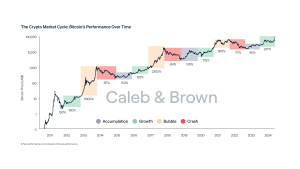Understanding Mortgage Affordability: Beyond the 28/36 Rule
Buying a home is a significant financial commitment, a monumental step for many. The decision is fraught with excitement and, understandably, a degree of apprehension. One of the most critical factors to consider is the affordability of your mortgage. Understanding how much of your monthly income should be dedicated to mortgage payments is vital to ensuring long-term financial health and avoiding undue stress.
The 28/36 Rule: A Common Guideline
A widely accepted rule of thumb in personal finance is the 28/36 rule. This guideline suggests that your total monthly housing expenses (including mortgage principal, interest, taxes, and insurance – often abbreviated as PITI) shouldn’t exceed 28% of your gross monthly income. Furthermore, your total debt payments (including credit cards, student loans, car payments, and your mortgage) should not surpass 36% of your gross monthly income. This rule provides a framework, but it’s crucial to remember it’s a guideline, not an absolute law.
For example, if your gross monthly income is $6,000, according to the 28/36 rule, your maximum monthly housing expense should be $1,680 (28% of $6,000), and your total debt payments shouldn’t exceed $2,160 (36% of $6,000). This leaves a considerable amount for other essential expenses and savings. However, individual circumstances can significantly impact the applicability of this rule.
Factors Influencing Mortgage Affordability
While the 28/36 rule offers a helpful starting point, several other factors significantly influence how much of your income you should allocate to your mortgage. These include:
- Interest Rates: Fluctuations in interest rates directly impact your monthly mortgage payment. Higher interest rates result in higher monthly payments, reducing your affordability.
- Loan Term: A shorter loan term (e.g., 15 years) leads to higher monthly payments but lower overall interest paid. Conversely, a longer term (e.g., 30 years) results in lower monthly payments but higher total interest paid.
- Down Payment: A larger down payment reduces the loan amount, subsequently lowering your monthly payments. A smaller down payment necessitates a larger loan, increasing your monthly obligation.
- Property Taxes and Insurance: These costs, included in your PITI, vary significantly by location and property value. Higher property taxes and insurance premiums increase your overall housing expense.
- Other Debts: Existing debt obligations (credit cards, student loans, etc;) reduce the amount you can comfortably allocate to a mortgage. Managing your debt effectively is crucial before taking on a mortgage.
- Emergency Fund: It’s crucial to have an emergency fund in place before buying a home. This fund provides a financial safety net for unexpected repairs, medical expenses, or job loss.
- Lifestyle and Spending Habits: Your lifestyle and spending habits significantly influence your financial capacity. Analyzing your current spending patterns can help determine how much you can realistically afford to dedicate to housing.
Beyond the Numbers: A Holistic Approach
While numerical guidelines are important, a holistic approach to mortgage affordability is crucial. It’s about more than just crunching numbers; it’s about understanding your financial well-being and long-term goals.
Consider your future financial projections. Will your income likely increase in the coming years? Are there any anticipated significant expenses (children’s education, retirement savings, etc.)? These factors should be considered when determining your mortgage affordability. It’s better to err on the side of caution and choose a mortgage that allows for comfortable living and financial flexibility.
Pre-Approval and Realistic Expectations
Before you even start house hunting, getting pre-approved for a mortgage is essential. This process provides a clear picture of how much you can realistically borrow. Pre-approval gives you a realistic budget and prevents disappointment later in the home-buying process.
It’s crucial to set realistic expectations. Don’t stretch your budget to the absolute limit just to own a home. Remember, a mortgage is a long-term commitment. Overextending yourself financially can lead to significant stress and potential financial hardship.
Exploring Different Mortgage Options
The type of mortgage you choose also significantly impacts your monthly payments. Different mortgage options offer varying interest rates, loan terms, and down payment requirements. Understanding these options is crucial in making an informed decision.
- Fixed-Rate Mortgages: These offer predictable monthly payments throughout the loan term. Interest rates are fixed, providing stability and financial planning predictability.
- Adjustable-Rate Mortgages (ARMs): These mortgages have interest rates that adjust periodically based on market conditions. While they may offer lower initial payments, they carry more risk due to fluctuating interest rates.
- FHA Loans: These government-backed loans require lower down payments and credit score requirements, making homeownership more accessible to a wider range of buyers.
- VA Loans: These loans are available to eligible veterans and military members, often offering favorable terms and no down payment requirements.
- USDA Loans: These loans are designed for rural homebuyers and often have low interest rates and flexible requirements.
Each mortgage type has its advantages and disadvantages. It’s essential to carefully consider your financial situation and long-term goals when selecting a mortgage option. Consulting with a financial advisor or mortgage lender can help you navigate these complexities and make an informed choice.
Seeking Professional Advice
Navigating the complexities of mortgage financing can be overwhelming. Seeking professional advice from financial advisors, mortgage brokers, and real estate agents is strongly recommended. These professionals possess the expertise to guide you through the process, ensuring you make informed decisions aligned with your financial goals.
A financial advisor can help you assess your overall financial picture, ensuring your mortgage aligns with your broader financial plan. A mortgage broker can compare various mortgage options from different lenders, helping you secure the most favorable terms. A real estate agent can provide valuable insights into the local housing market, helping you find a property within your budget.
Buying a home is a significant financial undertaking, a dream for many. Careful consideration of mortgage affordability is paramount. Understanding the 28/36 rule, analyzing individual financial circumstances, exploring different mortgage options, and seeking professional guidance are all integral parts of the process. Remember, responsible homeownership hinges on smart financial planning and a realistic assessment of your capabilities. Prioritizing financial health and stability ensures long-term success and peace of mind. Making informed choices will lead to a successful and satisfying homeownership experience. Ultimately, your comfort and financial security should always be the primary considerations.







